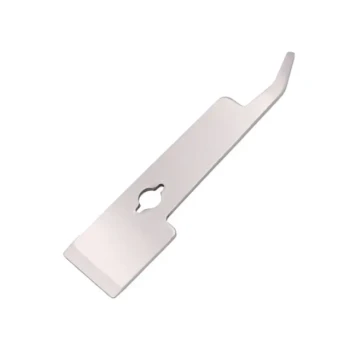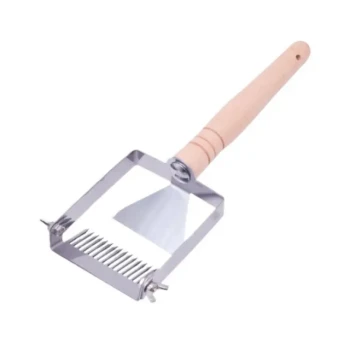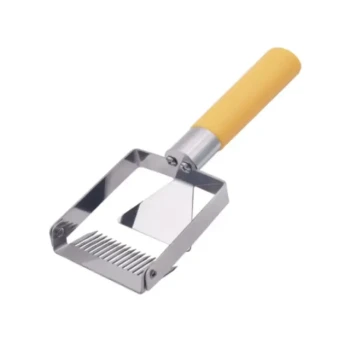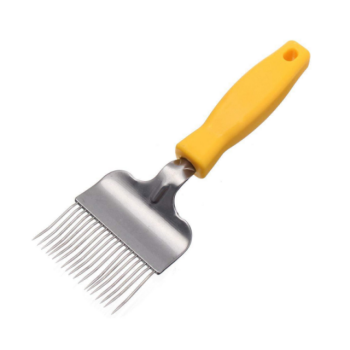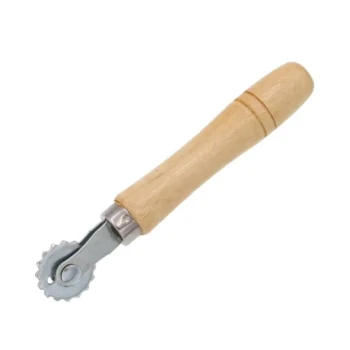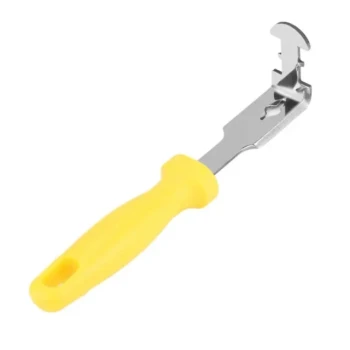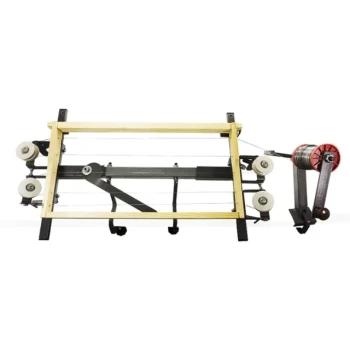The primary benefit of using instrumental insemination in honey bee breeding is the absolute control it gives breeders over honey bee genetics. Unlike natural open mating, which is a genetic lottery, this technique allows for the precise selection of both the queen and the drones she is mated with. This ensures that valuable, heritable traits are passed on to the next generation with a high degree of certainty.
The core challenge in selective bee breeding is the queen's random, multi-partner nuptial flight. Instrumental insemination solves this by replacing the genetic lottery of open mating with a deliberate, controlled process, giving breeders the power to create specific genetic lines and accelerate trait development.
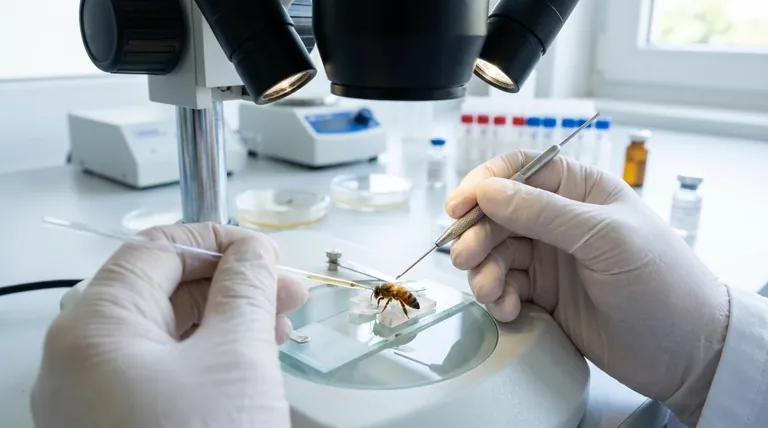
Why Natural Mating is a Breeding Challenge
To understand the value of instrumental insemination, we must first understand the problem it solves. The natural mating process of honey bees is inherently uncontrolled, making selective breeding exceptionally difficult.
The Queen's Nuptial Flight
A virgin queen embarks on one or more "nuptial flights" where she mates high in the air. This occurs in areas known as drone congregation areas, far from her home colony.
A True Genetic Lottery
During these flights, a queen will mate with 10 to 60 different drones. These drones come from a vast range of colonies, potentially hundreds, within a multi-mile radius.
The Breeder's Dilemma
This process makes it nearly impossible to control the paternal side of the genetic equation. A breeder can raise a queen with excellent traits, but her offspring's characteristics will be a random mix from the local drone population, diluting any intended genetic progress.
The Strategic Advantages of Controlled Mating
Instrumental insemination (I.I.) directly overcomes these challenges, giving breeders a level of precision comparable to that seen in livestock breeding for centuries.
Creating Specific Genetic Crosses
I.I. allows for the creation of specific crosses that would never occur in nature. Breeders can mate a queen from one genetic line to drones from another, even if they are separated by thousands of miles, to combine their desirable traits.
Amplifying Desirable Traits
If a single drone displays an exceptionally valuable trait (such as Varroa Sensitive Hygiene), its semen can be collected and used to inseminate multiple queens. This rapidly propagates its superior genetics throughout a breeding program.
Ensuring Genetic Consistency
For large-scale operations, semen from hundreds of drones of a specific stock can be homogenized, or mixed. This mixture is then used to inseminate a batch of queens, ensuring that each one receives a similar genetic profile and produces offspring with consistent characteristics.
Simplifying Stock Maintenance
Breeders can maintain pure genetic lines without the constant risk of contamination from feral or unselected local drone populations. This genetic isolation is critical for preserving the integrity of a breeding stock over many generations.
Understanding the Trade-offs and Requirements
While powerful, instrumental insemination is not a simple solution. It is a technical tool that requires investment and a solid foundation of knowledge to be used effectively.
The Skill and Equipment Barrier
The procedure itself is delicate and requires specialized microscopic equipment. It demands extensive practice and a steady hand to collect semen from drones and successfully inseminate a queen without causing injury.
Not a Substitute for Breeding Knowledge
I.I. is a tool to execute the decisions of a breeding program; it does not replace the program itself. Its success is entirely dependent on the breeder's ability to identify and select for desirable traits in both queens and drones.
Measuring Success
The viability of an inseminated queen is often measured by how quickly she begins to lay eggs (onset of oviposition). Modern techniques have been refined to the point where the success rates and performance of instrumentally inseminated queens are comparable to those of naturally mated queens.
Making the Right Choice for Your Goal
Ultimately, the decision to use instrumental insemination depends entirely on the specific goals of your breeding program.
- If your primary focus is research or creating unique genetic lines: I.I. is the only tool that allows you to make specific, intentional crosses with complete certainty.
- If your primary focus is amplifying a specific high-value trait: I.I. enables you to rapidly propagate the genetics of a single superior drone across numerous queens.
- If your primary focus is maintaining a pure genetic stock: I.I. provides the necessary genetic isolation to protect your line from outside drone influence.
- If your primary focus is large-scale, consistent queen production: I.I. with homogenized semen delivers a predictable and uniform genetic profile across entire batches of queens.
By replacing random chance with deliberate choice, instrumental insemination empowers breeders to shape the future of their honey bee stock with precision.
Summary Table:
| Advantage | Description |
|---|---|
| Genetic Precision | Replace random mating with deliberate selection of specific queens and drones. |
| Trait Amplification | Rapidly propagate superior genetics (e.g., Varroa resistance) from a single drone. |
| Stock Consistency | Produce batches of queens with uniform, predictable genetic profiles using homogenized semen. |
| Line Purity | Maintain pure genetic lines without contamination from feral drone populations. |
Ready to take control of your apiary's genetics?
For commercial apiaries and distributors, precise genetic control is the key to building resilient, productive, and profitable bee stock. HONESTBEE supplies the professional-grade beekeeping equipment and supplies you need to support advanced breeding programs.
Contact our wholesale experts today to discuss how our solutions can help you achieve your specific breeding goals.
Visual Guide
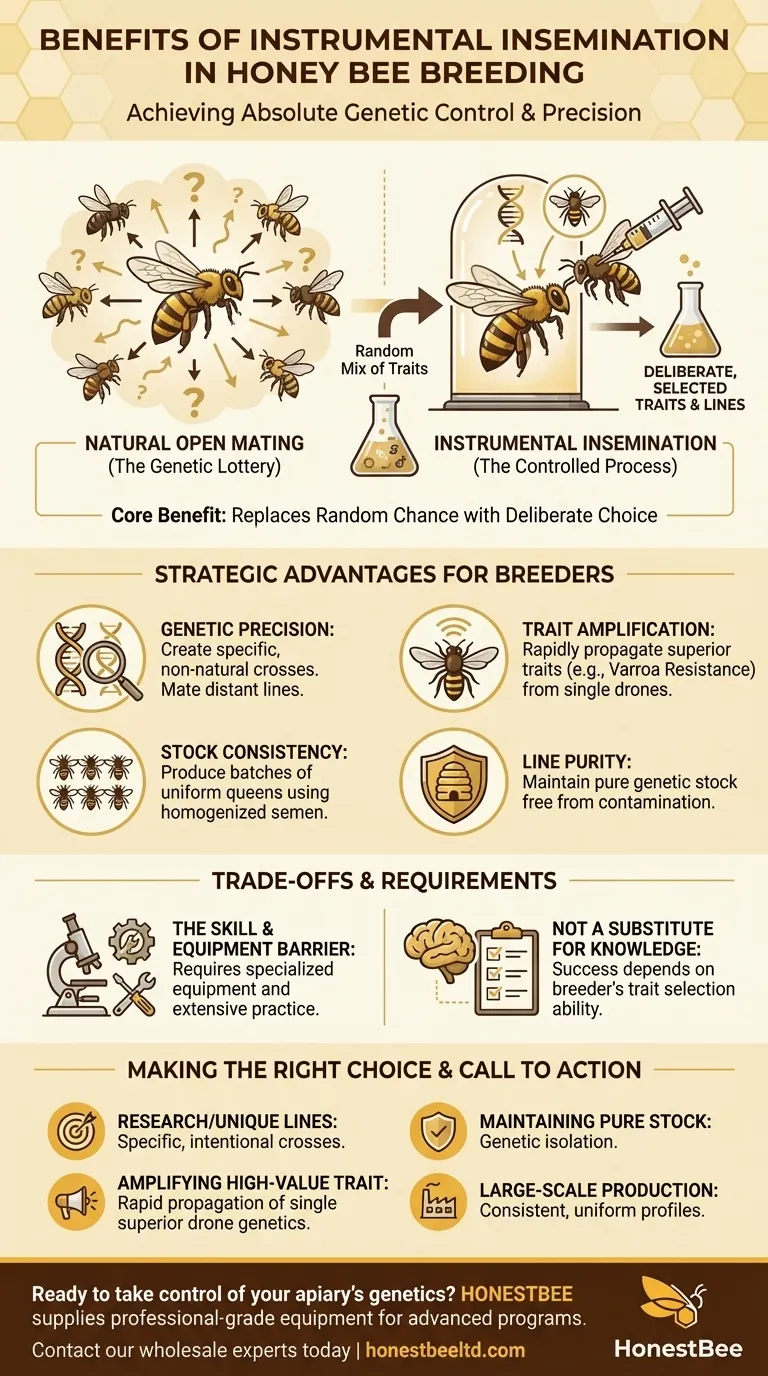
Related Products
- Professional Dual-End Stainless Steel Hive Tool for Beekeeping
- HONESTBEE Professional Mini J-Hook Hive Tool for Beekeeping
- Multi-Function Plier-Style Frame Grip Hive Tool
- Professional Multi-Function Stainless Steel Hive Tool
- Plastic Queen Bee Catcher Marker Tube Holder for Queen Marking Bottle
People Also Ask
- What should beginners consider when purchasing beekeeping equipment? A Guide to Essential Starter Gear
- What are the normal functions of a hive tool? The Essential Multi-Tool for Every Beekeeper
- What temperature is too cold to open a beehive? Protect Your Hive from Fatal Cold Shock
- What are the basic tools for beekeeping? Essential Starter Kit for Safe & Successful Hive Management
- What is the hive tool used for? The Essential Multi-Tool for Every Beekeeper

